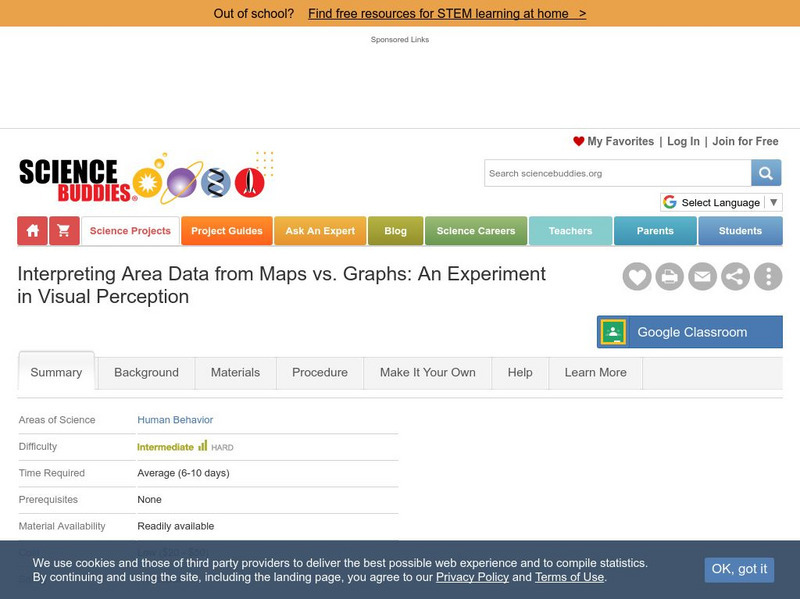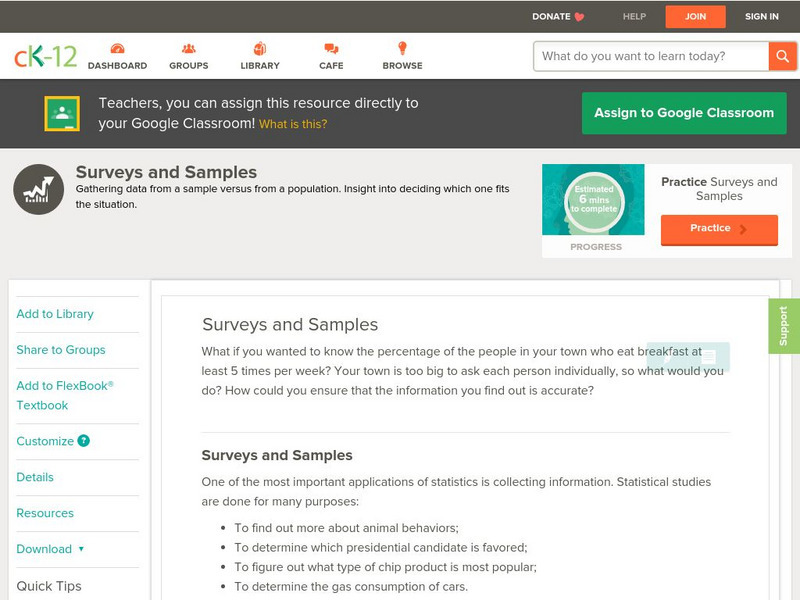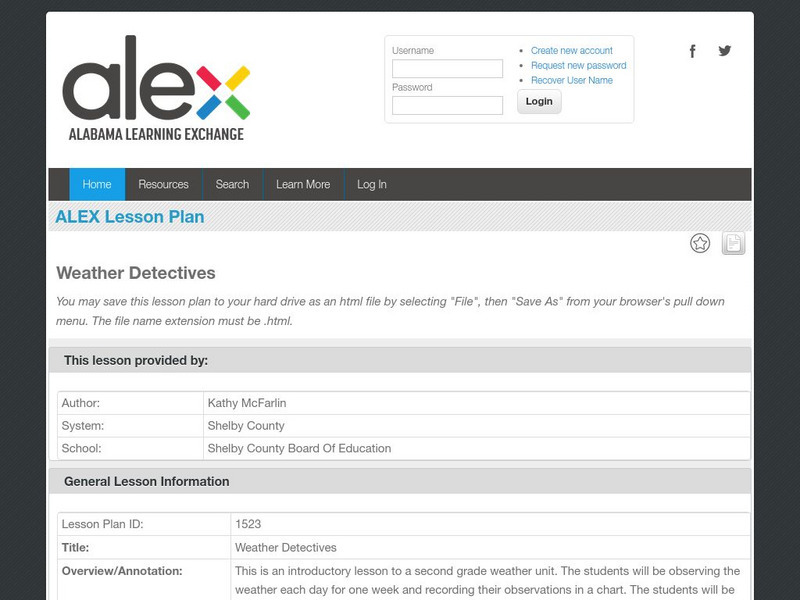Hi, what do you want to do?
Curated OER
Bioremediation
Learners design and conduct investigations that illustrate the effect bioremediation has on organic matter and determine environmental applications. They, in groups, present their findings to the class.
Curated OER
A Journey of Discovery with RXTE
Students complete different missions to examine the topic of x-ray sources. They use satellite images and websites to gather the information they need to complete the lesson. They complete a worksheet to end the lesson.
Curated OER
Can You Dig It?
Young scholars investigate a fossil site and diagram a site map. They role play as paleontologists.
Curated OER
Hypothesis Testing: Top Ten Singles
Students review and better examine hypothesis testing and evaluation of probability distributions. the use of the discovery method is vital to the studying because it is about student interests which helps for motivation.
Curated OER
Calculating the Average Mass of the Newly Discovered Element: Bean
Students determine the average mass of a new element using masses from three isotopes. In this chemistry instructional activity, students explain what an isotope is. They discuss their importance and uses.
Curated OER
State Your Position
Students practice using a global positioning system. They discuss the use of celestial objects as navigation points and its problems. They list the advantages and disadvantages of GPS as well.
Curated OER
Acids And Bases -- Universal Indicator
Eighth graders design and perform an experiment that uses a Universal Indicator Color Guide to measure the strength of acids and bases. They also determine happens when acids and bases are mixed together. They decide which of three...
Curated OER
Apply Technological Design and Scientific Habits of Mind
Students work together to brainstorm their obstacles in testing different scientific principles. In groups, they are given a scenerio with a specific dilemma and they use the internet to research how to solve the problem. They design a...
Curated OER
Traveling Around Nebraska
Students analyze a current or historical photograph from their textbook and as a class complete a worksheet of the analysis. Using the Photographic Analysis Form, they locate and analyze two transportation photographs and use the...
Curated OER
Educating the Community
Students research the effects of invasive and exotic plants. They create posters, webpages and books to educate the community. They present their material in different forums.
Curated OER
Assessment and Evaluation
Students model creating level appropriate lesson plans. Using a matrix, students develop a lesson plan with various technological resources. Students videotape their presentation and write a self narrative reflection evaluation.
Curated OER
What Boat Designs Float the Best?
Fifth graders investigate buoyancy by conducting a science experiment. In this water properties instructional activity, 5th graders predict which of their different paper boat designs will float for the longest period. ...
Curated OER
Rover Races
Pupils simulate driving a rover on the surface of Mars. In this space science lesson, students identify the challenges experienced by astronauts in operating a vehicle. They recommend some changes to make their 'rover' better.
Science Buddies
Science Buddies: Interpreting Area Data From Maps vs. Graphs
Graphical methods of data presentation are a key feature of scientific communication. This project asks the question, "What's the best way to compare the land area of states: a map or a bar graph?" You'll be measuring performance on two...
CK-12 Foundation
Ck 12: Statistics: Surveys and Sample
[Free Registration/Login may be required to access all resource tools.] Learn how to use surveying and sampling to collect accurate data.
Alabama Learning Exchange
Alex: Weather Detectives
This is an introductory lesson to a second grade weather unit. The students will be observing the weather each day for one week and recording their observations in a chart. The students will be integrating information from the Internet...
Science Education Resource Center at Carleton College
Serc: Reese's Pieces Activity: Sampling From a Population
Students use Reese's Pieces to investigate the proportion of orange candies present in a set of 25. After collecting data for the class, they use a web applet to collect more data for random samples. This is compared to the actual...
University Corporation for Atmospheric Research
Ucar: Satellites and Weather Teaching Box
Help your middle school student learn how satellites help make weather forecasts more accurate and how the COSMIC satellites collect data about the atmosphere by measuring bending radio waves.
NASA
Nasa: Shuttle Radar Topography Mission
The Shuttle Radar Topography Mission, a project to collect the most accurate topographic database for the Earth, is documented at this site.
TED Talks
Ted: Ted Ed: Pros and Cons of Public Opinion Polls
How do public opinion polls work? And, more importantly, are they accurate? Jason Robert Jaffe reveals the complexities and biases of polls and provides tips on how to think about polls as we make everyday decisions. [4:25]
Utah Education Network
Uen: Design Your Own Bedroom
Many students dream of designing their ideal bedroom. For this exercise, students will be required to limit their designs by size (as a specific volume) and price (a specific amount). They must design the floor plan, including furniture...
Science Education Resource Center at Carleton College
Serc: Bridge: Ocean Sciences Education Teacher Resource Center
Bridge, the Ocean Sciences Education Teacher Resource Center, is a growing collection of on-line marine education resources. It provides educators with accurate, useful, content-correct and content-current marine and data information on...
Middle School Science
Middle School science.com: Smile Metric Style Lesson
In this lesson plan site, pupils will learn how to use a metric ruler to measure length, accurately read and record measurements taken in centimeters and millimeters, and collect and analyze data using a stem and leaf.


























